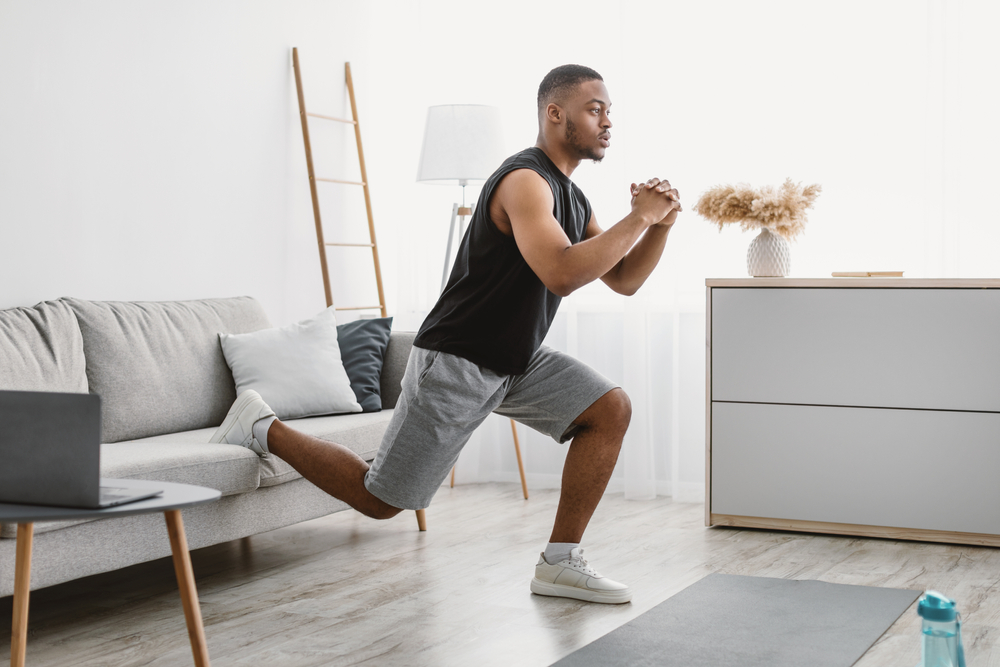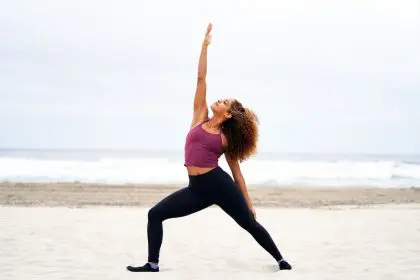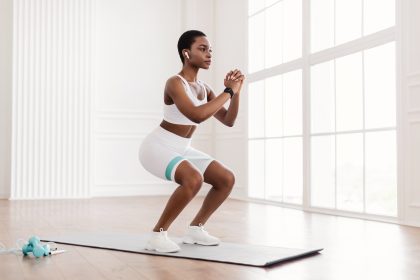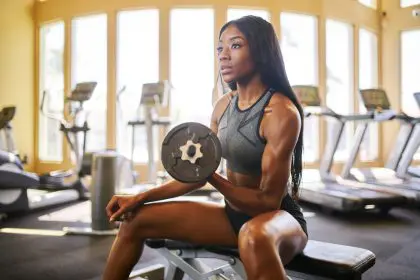You’ve been walking past a complete home gym every single day without realizing it. That sturdy coffee table, reliable couch, and solid dining chairs aren’t just furniture, they’re versatile pieces of exercise equipment that can provide resistance, elevation, and support for workouts that rival anything you’d do at an expensive gym.
The fitness industry wants you to believe you need specialized equipment, monthly memberships, and complicated machines to get in shape, but your furniture can provide everything you need for effective strength training, cardio, and flexibility work. The key is understanding how to use everyday items safely and strategically to target different muscle groups.
This approach to fitness isn’t just convenient, it’s actually more functional than traditional gym workouts because you’re using irregular objects and unstable surfaces that engage stabilizing muscles and improve real-world strength in ways that machines simply can’t replicate.
Your couch becomes a complete upper body gym
Your couch or sofa provides the perfect height and stability for dozens of upper body exercises that target your chest, shoulders, triceps, and core. The soft surface adds an element of instability that engages more muscle fibers than rigid gym equipment would provide.
Couch push-ups with your feet on the floor and hands on the couch edge create an inclined angle that’s perfect for beginners or anyone working back up to full push-ups. The elevation reduces the amount of body weight you’re lifting while still providing significant resistance for building upper body strength.
Reverse the position for decline push-ups by placing your feet on the couch and hands on the floor to increase difficulty and target your upper chest and shoulders more intensely. This variation is significantly more challenging than standard push-ups and provides serious muscle-building stimulus.
Tricep dips using the couch edge work your triceps, shoulders, and core while the soft cushions provide enough give to be joint-friendly. You can adjust difficulty by bending your knees more for easier repetitions or extending your legs straight for increased challenge.
Chairs transform into strength training stations
A sturdy dining chair or desk chair becomes incredibly versatile exercise equipment that can support your body weight for numerous strength-building movements. The key is ensuring your chair is stable and can handle dynamic movement without sliding or tipping.
Chair-supported squats help you master proper squat form while building leg strength progressively. Start by sitting down and standing up normally, then progress to hovering just above the seat before standing, and eventually eliminate the chair contact while using it as a safety backup.
Single-leg chair squats provide unilateral leg training that addresses strength imbalances while dramatically increasing difficulty. Hold the chair back for balance while performing single-leg squats, pistol squats, or step-ups using the chair seat as your platform.
Chair-assisted stretching opens up flexibility possibilities that would be difficult or impossible without support. Use the chair back for standing hip flexor stretches, hamstring stretches with your foot elevated on the seat, or seated spinal twists that use the chair arms for leverage.
Coffee tables create perfect cardio and core challenges
Your coffee table provides the ideal height for step-ups, lateral movements, and core exercises that get your heart rate up while building functional strength. Most coffee tables are the perfect height for challenging step-ups without being so high that they become dangerous.
Coffee table step-ups provide excellent cardiovascular conditioning while building leg strength and improving balance and coordination. Step up with control, focusing on using your leg muscles rather than momentum, and vary your approach by stepping up sideways or diagonally.
Mountain climbers with your hands on the coffee table create an inclined plank position that’s easier on your wrists and shoulders while still providing intense core and cardiovascular training. The elevation allows you to maintain proper form for longer periods.
Coffee table planks with your feet elevated increase core challenge while the sturdy surface provides stable support for your forearms. This variation targets your entire core more intensely than floor planks while remaining accessible for most fitness levels.
Stairs become your personal cardio machine
If you have stairs in your home, you have access to one of the most effective pieces of cardiovascular equipment available. Stair climbing provides intense cardio training while building leg strength and power in ways that treadmills and elliptical machines can’t match.
Basic stair climbing for time or repetitions provides scalable cardio training that you can adjust by changing pace, taking steps two at a time, or adding lateral movements. Even 10-15 minutes of continuous stair climbing provides significant cardiovascular benefits.
Stair sprints involve running up the stairs as quickly as possible, then walking down for recovery. This high-intensity interval training approach builds cardiovascular fitness, leg power, and anaerobic capacity more effectively than steady-state cardio.
Single-step exercises using just the bottom step provide endless variety for cardio and strength training. Step-ups, lateral step-ups, calf raises, and plyometric exercises all work effectively with just one sturdy step.
Walls provide resistance and support for total body training
Your walls offer stable support for isometric exercises, stretching, and resistance training that targets muscles throughout your body. Wall exercises are particularly valuable for people with balance issues or those recovering from injuries.
Wall sits build incredible leg strength and endurance while also improving posture and core stability. The isometric nature of wall sits creates muscle tension without joint movement, making them ideal for building strength while being gentle on your knees and ankles.
Wall push-ups provide upper body training for beginners or anyone who needs a low-impact option. Stand arm’s length from the wall and perform push-ups against the vertical surface, adjusting difficulty by changing your distance from the wall.
Wall handstands and supported inversions improve shoulder strength, core stability, and circulation while providing a fun challenge that builds confidence for more advanced movements. Start with your feet walking up the wall while your hands remain on the floor.
Towels add resistance and instability to any exercise
Towels transform from simple household items into versatile fitness tools that add resistance, instability, and sliding elements to your furniture workouts. A basic bath towel can create dozens of exercise variations that target different muscle groups.
Towel slides on smooth floors turn your legs into a suspension trainer for exercises like mountain climbers, lateral lunges, and hamstring curls. Place towels under your feet and use the sliding motion to create challenging movements that engage your core and stabilizing muscles.
Towel resistance exercises use the towel as a resistance band for upper body movements. Partner exercises where two people pull against opposite ends of a towel, or solo exercises where you create resistance by pulling against your own grip provide effective strength training.
Towel-assisted stretching helps you achieve deeper stretches and maintain proper alignment during flexibility work. Use towels to extend your reach for hamstring stretches, shoulder stretches, or any movement where you need assistance reaching your target position.
Creating effective routines with household items
The key to successful furniture workouts is combining different exercises into structured routines that target all major muscle groups while providing cardiovascular benefits. Effective routines alternate between upper body, lower body, and core exercises to allow recovery while maintaining intensity.
Circuit training using furniture exercises keeps your heart rate elevated while building strength. Move quickly between different furniture stations, performing exercises for time rather than specific repetitions to maintain cardiovascular intensity throughout your workout.
Progressive overload with furniture exercises comes from increasing repetitions, holding positions longer, changing angles to increase difficulty, or combining movements to create more complex exercises. Your furniture provides endless opportunities for making exercises more challenging as you get stronger.
Safety considerations become crucial when using furniture for exercise because household items aren’t designed for dynamic loading. Test stability before each workout, avoid exercises that might damage furniture or flooring, and always prioritize proper form over intensity to prevent injuries.
The beauty of furniture workouts is their accessibility and convenience, but their effectiveness depends on consistency and progressive challenge just like any other training program.















